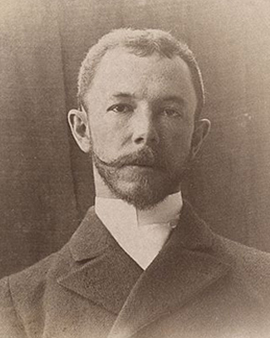Irving Ramsey Wiles was born in Utica, New York, on April 8, 1861. He received his education at Sedgwick Institute in Great Barrington and learned the basics of painting from his father, Lemuel M. Wiles, who painted mostly landscapes. From 1879 to 1881 he studied at the Art Students League of New York with James Carroll Beckwith and William Merritt Chase and later in Paris with Charles Emile Auguste Carolus Duran. In his early years he worked as an illustrator for American magazines before later turning to portraiture with great success. He was a member of the Society of American Artists and was inducted into the National Academy of Design in 1897. Wiles was also a member of the American Water Color Society.
He was a versatile painter by the end of the 19th century, but his career reached new heights in 1902 when his portrait of actress Julia Marlowe was exhibited at the National Academy. This elegant and successful portrait propelled him to fame, and from 1902 until the late 1920s, when he retired due to infirmity, Wiles received continuous portrait commissions from America's elite. Wiles painted notable Americans such as Theodore Roosevelt and William Jennings Bryan. Although Wiles is valued today for his paintings and portraits of women, during his lifetime he was considered a master of portraits of men. In 1919, he was selected by the National Art Committee to paint portraits for a pictorial history of the First World War.
Toward the end of his career, Wiles was best known for the landscape and seascapes he painted at his home in Peconic, New York. Wiles died penniless, without even a headstone, on July 29, 1948, in Peconic. Despite the decline of interest in his work during his later years, his paintings are remembered and exhibited in major institutions such as the De Young Museum, the Metropolitan Museum of Art, the National Gallery in Washington DC, and the Smithsonian American Art Museum.
×





.jpg)
.jpg)
.jpg)
.jpg)
_-_(MeisterDrucke-1417317).jpg)
_-_(MeisterDrucke-1417317).jpg)
_-_(MeisterDrucke-1413536).jpg)
_-_(MeisterDrucke-1413536).jpg)
.jpg)
.jpg)
_-_(MeisterDrucke-1407618).jpg)
_-_(MeisterDrucke-1407618).jpg)
.jpg)
.jpg)
.jpg)
.jpg)
_-_(MeisterDrucke-1406649).jpg)
_-_(MeisterDrucke-1406649).jpg)
_-_(MeisterDrucke-1417486).jpg)
_-_(MeisterDrucke-1417486).jpg)
_-_(MeisterDrucke-1417016).jpg)
_-_(MeisterDrucke-1417016).jpg)
.jpg)
.jpg)
.jpg)
.jpg)
.jpg)
.jpg)
.jpg)
.jpg)






